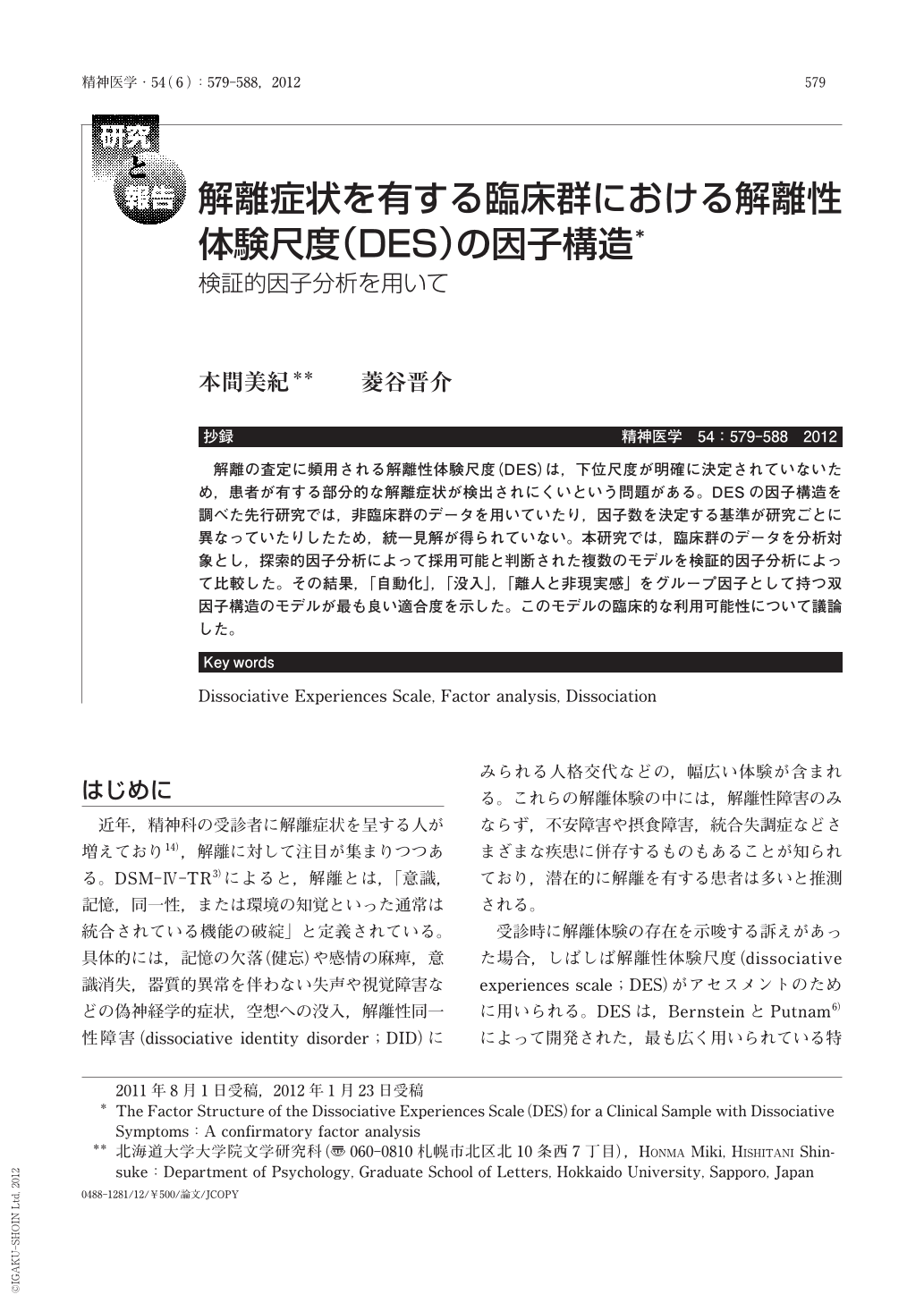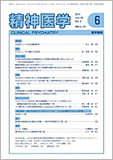Japanese
English
- 有料閲覧
- Abstract 文献概要
- 1ページ目 Look Inside
- 参考文献 Reference
抄録
解離の査定に頻用される解離性体験尺度(DES)は,下位尺度が明確に決定されていないため,患者が有する部分的な解離症状が検出されにくいという問題がある。DESの因子構造を調べた先行研究では,非臨床群のデータを用いていたり,因子数を決定する基準が研究ごとに異なっていたりしたため,統一見解が得られていない。本研究では,臨床群のデータを分析対象とし,探索的因子分析によって採用可能と判断された複数のモデルを検証的因子分析によって比較した。その結果,「自動化」,「没入」,「離人と非現実感」をグループ因子として持つ双因子構造のモデルが最も良い適合度を示した。このモデルの臨床的な利用可能性について議論した。
The Dissociative Experiences Scale (DES) is the most frequently used measure of dissociation. How-ever, since the subscales of DES have not been clearly defined, it is difficult to detect of partial dissociative symptoms in patients using it. Because previous studies that examined the factor structure of the DES often used the data of non-clinical samples and various criteria were adopted for determining the number of factors in exploratory factor analysis, the results of these studies have been inconsistent. To overcome these limitations, the present study used only the data of psychiatric patients with dissociative symptoms. We conducted confirmatory factor analyses to compare the degree of fit between competing models derived from exploratory factor analyses. The results indicated that the model of best fit was the bifactor model, comprising one general factor and three group factors, which were named “automatization,” “absorption,” and “depersonalization and derealization.” The clinical utility of this model in the assessment of dissociation was discussed.

Copyright © 2012, Igaku-Shoin Ltd. All rights reserved.


